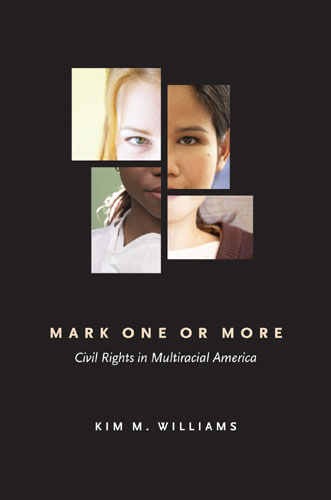The Politics of Multiracialism: Challenging Racial Thinking
State University of New York Press
June 2004
263 pages
Hardcover ISBN-10: 0-7914-6153-X; ISBN-13: 978-0-7914-6153-2
Paperback ISBN-10: 0-7914-6154-8; ISBN13: 978-0-7914-6154-9
Editor:
Heather M. Dalmage, Professor of Sociology and Director
Mansfield Institute for Social Justice
Roosevelt University

A provocative analysis of current thought and discourse on multiracialism.
This is the first book to critically look at the political issues and interests surrounding the broadly defined Multiracial Movement and at what is being said about multiracialism. Many of the multiracial family organizations that exist across the United States developed socially, ideologically, and politically during the conservative Reagan years. While members of the Multiracial Movement differ widely in their political views, the concept of multiracialism has been taken up by conservative politicians in ways that are often inimical to the interests of traditionally defined minorities.
Contributors look at the Multiracial Movement’s voice and at the political controversies that attend the notion of multiracialism in academic and popular literature, internet discourse, census debates, and discourse by and about pop culture celebrities. The work discusses how multiracialism, hybridity, and racial mixing have occurred amidst existing academic discussions of authenticity, community borders, identity politics, the social construction of race, and postmodern fragmentation. How the Multiracial Movement is shaping and transforming collective multiracial identities is also explored.
Contributors include Erica Chito Childs, Kimberly McClain DaCosta, Heather M. Dalmage, Abby L. Ferber, Charles A. Gallagher, Terri A. Karis, Rebecca Chiyoko King-O’Riain, Kerry Ann Rockquemore, Barbara Katz Rothman, Rainier Spencer, Eileen T. Walsh, and Kim M. Williams.
Table of Contents
Part One: Context of the Multiracial Movement
1. All in the Family: The Familial Roots of Racial Divisions
Kimberly McClain DaCosta
2. Defending the Creation of Whiteness: White Supremacy and the Threat of Interracial Sexuality
Abby L. Ferber
3. Racial Redistricting: Expanding the Boundaries of Whiteness
Charles A. Gallagher
4. Linking the Civil Rights and Multiracial Movements
Kim M. Williams
Part Two: Discourses of the Multiracial Movement
5. Beyond Pathology and Cheerleading: Insurgency, Dissolution, and Complicity in the Multiracial Idea
Rainier Spencer
6. Deconstructing Tiger Woods: The Promise and Pitfalls of Multiracial Identity
Kerry Ann Rockquemore
7. Multirace.com: Multiracial Cyberspace
Erica Chito Childs
8. “I Prefer to Speak of Culture”: White Mothers of Multiracial Children
Terri A. Karis
Part Three: Lessons from the Multiracial Movement
9. Model Majority? The Struggle for Identity among Multiracial Japanese Americans
Rebecca Chiyoko King-O’Riain
10. Transracial Adoption: Refocusing Upstream
Barbara Katz Rothman
11. Protecting Racial Comfort, Protecting White Privilege
Heather M. Dalmage
12. Ideology of the Multiracial Movement: Dismantling the Color Line and Disguising White Supremacy?
Eileen T. Walsh
List of Contributors
Index

